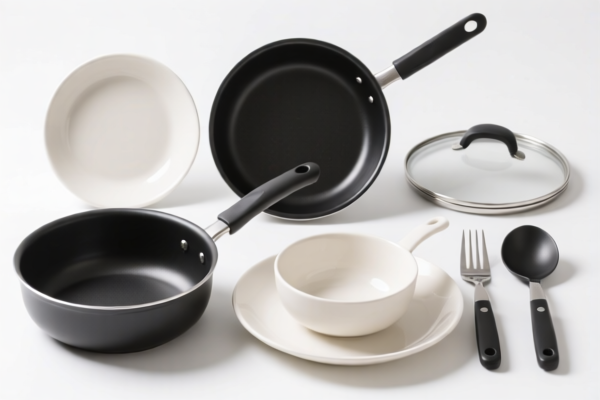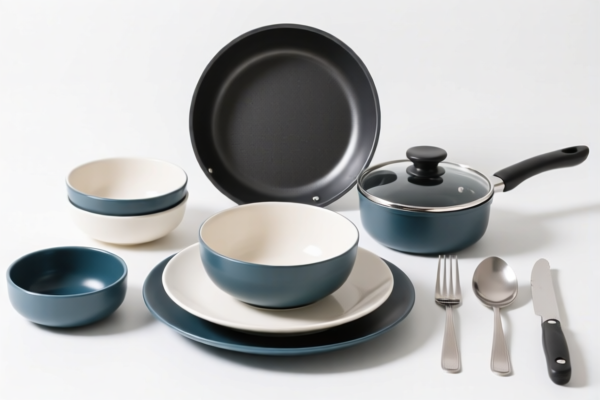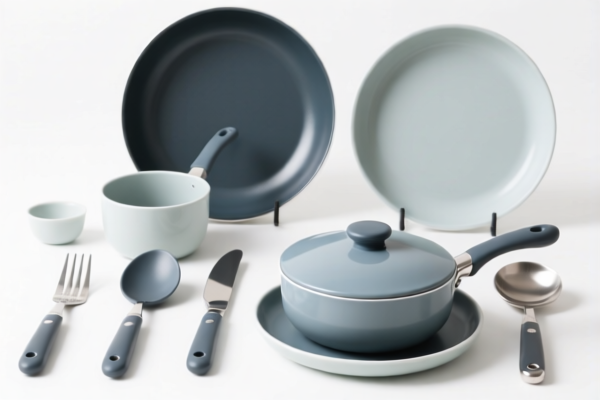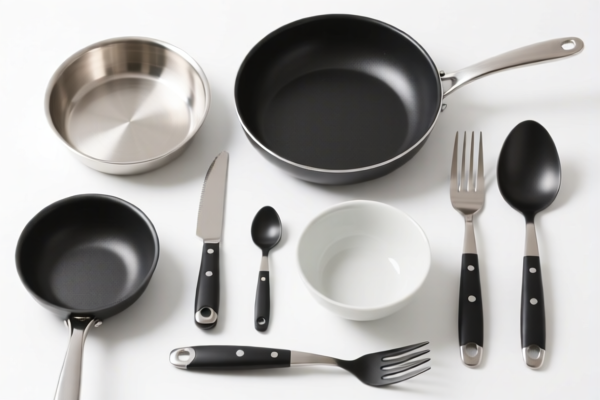| HS Code | Official Doc | Tariff Rate | Origin | Destination | Effective Date |
|---|---|---|---|---|---|
| 7323930060 | Doc | 57.0% | CN | US | 2025-05-12 |
| 7323997000 | Doc | 60.3% | CN | US | 2025-05-12 |
| 3924104000 | Doc | 33.4% | CN | US | 2025-05-12 |
| 3926901600 | Doc | 40.6% | CN | US | 2025-05-12 |
| 9604000000 | Doc | 42.4% | CN | US | 2025-05-12 |




Kitchenware Kit
A kitchenware kit is a bundled set of commonly used tools, utensils, and cookware intended to equip a kitchen, often for new homeowners, students, or those seeking to replace existing items. Kits vary significantly in size, contents, and quality, catering to different needs and budgets.
Materials
Kitchenware kits incorporate a diverse range of materials, including:
- Stainless Steel: A common material for pots, pans, utensils (spoons, spatulas, whisks), and colanders due to its durability, resistance to corrosion, and ease of cleaning.
- Non-Stick Coatings (e.g., Teflon, Ceramic): Applied to pans for easy food release and reduced oil usage. Quality varies significantly, impacting lifespan and potential health concerns.
- Aluminum: Lightweight and excellent heat conductor, often used in cookware, sometimes anodized for increased durability and non-reactivity.
- Silicone: Used for spatulas, baking tools, and trivets due to its heat resistance and flexibility.
- Wood: Commonly used for cutting boards, handles of utensils, and rolling pins.
- Plastic: Found in measuring cups, containers, and some utensils. Quality and BPA-free status are important considerations.
- Cast Iron: Durable and retains heat well, often included in more comprehensive kits, particularly those geared towards serious cooking.
Purpose
The primary purpose of a kitchenware kit is to provide a foundational set of tools necessary for basic food preparation and cooking tasks. This eliminates the need to purchase individual items and can often be more cost-effective.
Function
Kits typically facilitate a wide range of cooking functions, including:
- Cooking: Pots, pans, and skillets enable boiling, frying, sautéing, and simmering.
- Baking: Baking sheets, muffin tins, and measuring tools support baking tasks.
- Food Preparation: Cutting boards, knives, and mixing bowls are used for chopping, slicing, and combining ingredients.
- Serving: Some kits include serving utensils like ladles and spoons.
- Storage: Containers are often included for storing leftovers or prepped ingredients.
Usage Scenarios
- New Homeowners/Apartment Dwellers: Equipping a new kitchen from scratch.
- Students: Providing essential tools for cooking in dorms or apartments.
- First-Time Cooks: Offering a starting point for building a kitchen arsenal.
- Replacing Existing Items: Updating or replacing worn-out or missing kitchen tools.
- Gifting: A practical and thoughtful gift for cooking enthusiasts.
Common Types
- Basic Starter Kits: Include essential pots, pans, and a few basic utensils. Often the most affordable option.
- Deluxe Kits: Contain a wider range of cookware, utensils, and accessories, including specialty items like stockpots, saucepans, and baking molds.
- Non-Stick Kits: Focus on cookware with non-stick coatings, ideal for those prioritizing easy cooking and cleaning.
- Stainless Steel Kits: Emphasize durability and versatility with stainless steel cookware.
- Specialty Kits: Target specific cooking styles, such as baking, grilling, or pressure cooking.
- Individual Component Kits: Focused on specific functions, such as knife sets, measuring cup and spoon sets, or baking tool sets.
Based on the provided information, “kitchenware kit” can be classified under several HS codes, depending on the materials of the components within the kit. Here's a breakdown of potential classifications:
- 7323930060: This code covers “Table, kitchen or other household articles and parts thereof, of iron or steel; iron or steel wool; pot scourers and scouring or polishing pads, gloves and the like, of iron or steel: Other: Of stainless steel Cooking and kitchen ware: Other: Kitchen ware”. This would apply if the kit primarily consists of stainless steel kitchenware. The basic tariff is 2.0%, with no additional tariff currently, but a 30% additional tariff on steel products will be applied after April 2, 2025, plus a 25% steel/aluminum additional tariff. The total tariff rate is currently 57.0%.
- 7323997000: This code covers “Table, kitchen or other household articles and parts thereof, of iron or steel; iron or steel wool; pot scourers and scouring or polishing pads, gloves and the like, of iron or steel: Other: Other: Not coated or plated with precious metal: Other: Cookingware”. This applies to iron or steel kitchenware that is not coated or plated with precious metals. The basic tariff is 5.3%, with no additional tariff currently, but a 30% additional tariff on steel products will be applied after April 2, 2025, plus a 25% steel/aluminum additional tariff. The total tariff rate is currently 60.3%.
- 3924104000: This code covers “Tableware, kitchenware, other household articles and hygienic or toilet articles, of plastics: Tableware and kitchenware: Other”. If the kit is made of plastic, this code applies. The basic tariff is 3.4%, with a 30% additional tariff applied after April 2, 2025. The total tariff rate is currently 33.4%.
It is important to determine the primary material composition of the “kitchenware kit” to select the correct HS code. If the kit contains components made of different materials, each component may need to be classified separately.
Customer Reviews
No reviews yet.